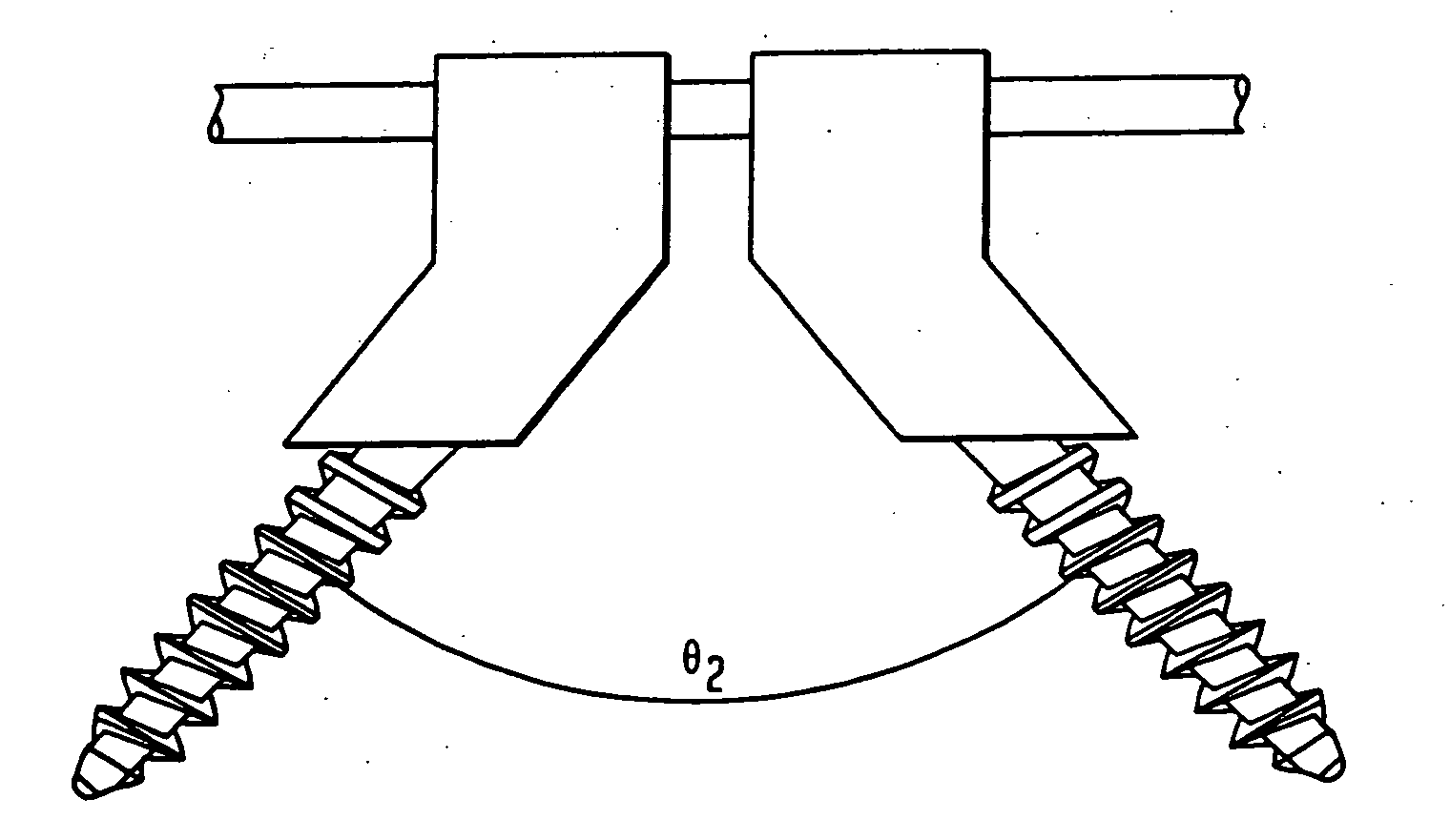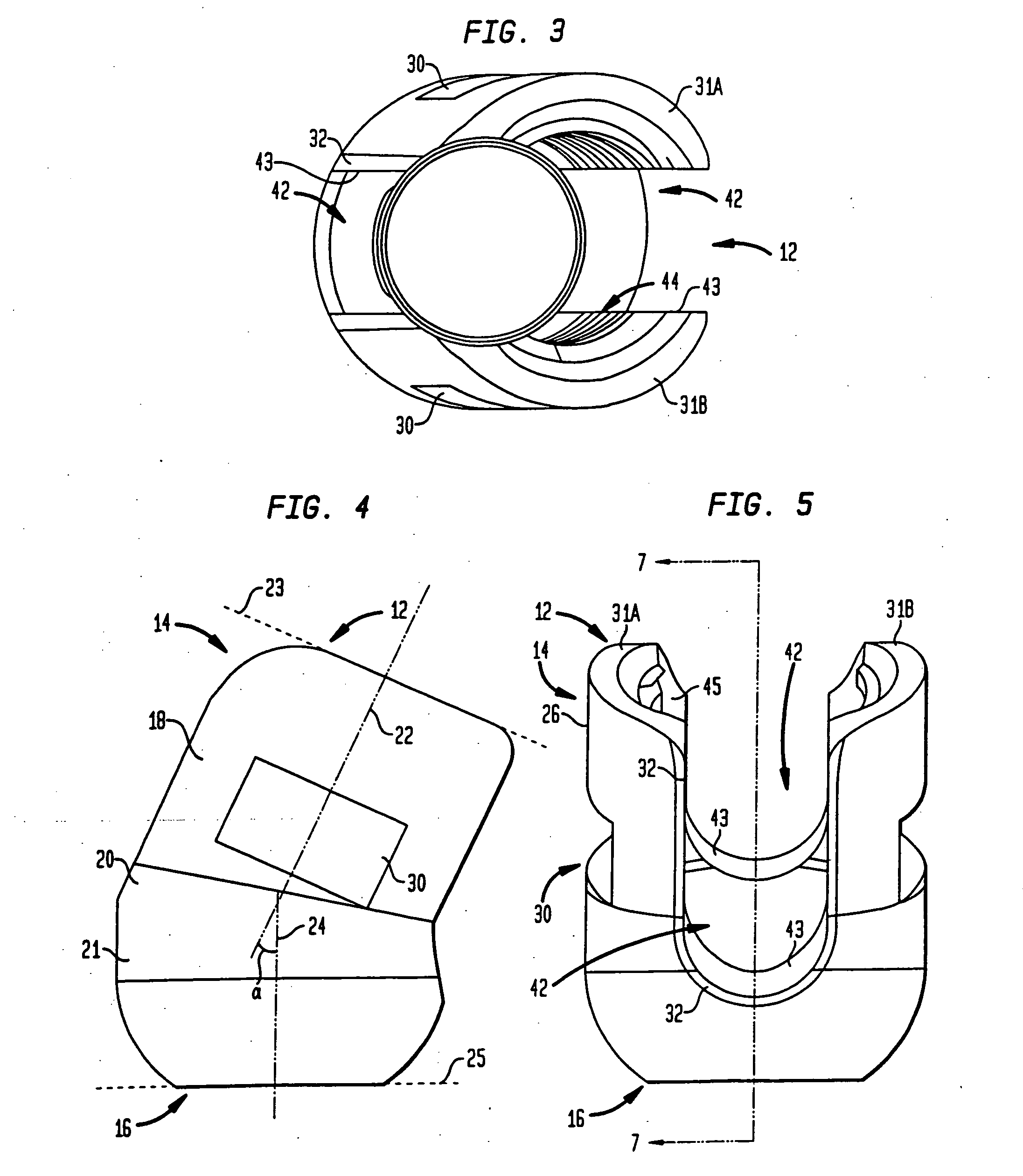Methods for stabilizing bone using spinal fixation devices
a technology of spinal fixation and bone, which is applied in the field of spinal fixation devices, can solve the problems of reducing nerve function, affecting the treatment effect and affecting the recovery of patients,
- Summary
- Abstract
- Description
- Claims
- Application Information
AI Technical Summary
Benefits of technology
Problems solved by technology
Method used
Image
Examples
Embodiment Construction
[0082]Referring to FIG. 2, the present invention is generally related to providing bi-axial coupling elements that are capable of pivoting over a broader range of angles (e.g. to an angle θ2 of up to about 110°), thereby providing for greater angulation than is possible with the prior art devices shown in FIG. 1.
[0083]FIGS. 3-16 show a bone fixation assembly, in accordance with certain preferred embodiments of the present invention. The bone fixation assembly may be secured to the pedicles of vertebral bodies of a spinal column. Referring to FIGS. 3-7, the fixation assembly includes a coupling element 12 preferably made of a biologically inert material, preferably any metal customarily used for surgical devices and particularly those used for bone screws and pins, such as titanium or stainless steel. Other suitable materials for the coupling element include alloys, composite materials, ceramics or carbon fiber materials. Coupling element 12 has an upper end 14 and a lower end 16. Th...
PUM
 Login to View More
Login to View More Abstract
Description
Claims
Application Information
 Login to View More
Login to View More - R&D
- Intellectual Property
- Life Sciences
- Materials
- Tech Scout
- Unparalleled Data Quality
- Higher Quality Content
- 60% Fewer Hallucinations
Browse by: Latest US Patents, China's latest patents, Technical Efficacy Thesaurus, Application Domain, Technology Topic, Popular Technical Reports.
© 2025 PatSnap. All rights reserved.Legal|Privacy policy|Modern Slavery Act Transparency Statement|Sitemap|About US| Contact US: help@patsnap.com



